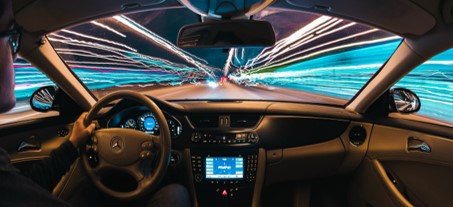Aggressive Driving
Aggressive driving is almost any practice that makes you want to throw something at the offending driver. Unfortunately, to do that would also be considered aggressive driving. Things like following too closely, speeding, road rage, and overuse of your horn are all habits of aggressive drivers. What makes these practices extra annoying is that they help no one, not even the person who seems to think they’ll help get him to his destination faster. Following too closely is dangerous for the occupants of both vehicles. It’s the vehicular equivalent of a high school bully. Speeding doesn’t save nearly as much time as people seem to think. Road rage is an exercise in futility, as is needless honking. All in all, if there’s a driving practice you’d prefer people not to do near you, maybe try not to do it yourself.
Defensive Driving Mindset
Defensive driving is mostly in the way you think while you’re driving. It means defending yourself against other drivers. It means assuming that every other driver on the road will always, always do the stupid or dangerous thing, and being prepared to react in order to protect yourself. This is a delicate balance, as you have to do all of that without becoming the bad guy yourself. After all, the best defensive driving mindset is to assume you are the only good driver on the road, but not be so cocky about it that you become just like the problem drivers.
As an example, imagine you’re taking a drive somewhere. It’s a nice day, the trees are swaying in the breeze, and there’s another car in the next lane, just a couple feet ahead of you. If you’re a defensive driver, you’re very aware of that other car. You might notice that other car is going just a couple miles an hour faster than you are, but they’re approaching a slow-moving truck. If you’re a defensive driver, you must assume that other car might try to quickly move into your lane, maybe without signaling, to get around the truck. You’d be prepared to react to protect yourself in that situation, either by slowing down or maybe even honking to remind the other driver that he’s not the only person on the road. Hint: the correct reaction is not to speed up to pass the other driver.
So, What Is It Really?
People are always in a rush, especially in big cities, and that leads to a lot of aggressive, or even offensive, driving. Defensive Driving is the antithesis of that. It means driving safely, in a way that protects yourself and everyone around you. It means sharing the road not only with other cars and trucks, but with pedestrians, bicyclists, and motorcyclists. It takes a keen awareness of your surroundings so that you can be prepared for any asinine move other drivers might try to pull. It’s the Golden Rule, “Treat others as you would want to be treated,” of driving. On top of all of that, the easy answer is that defensive driving is a description of a course that can be taken to appease courts and insurance companies.

 Live Chat
Live Chat






